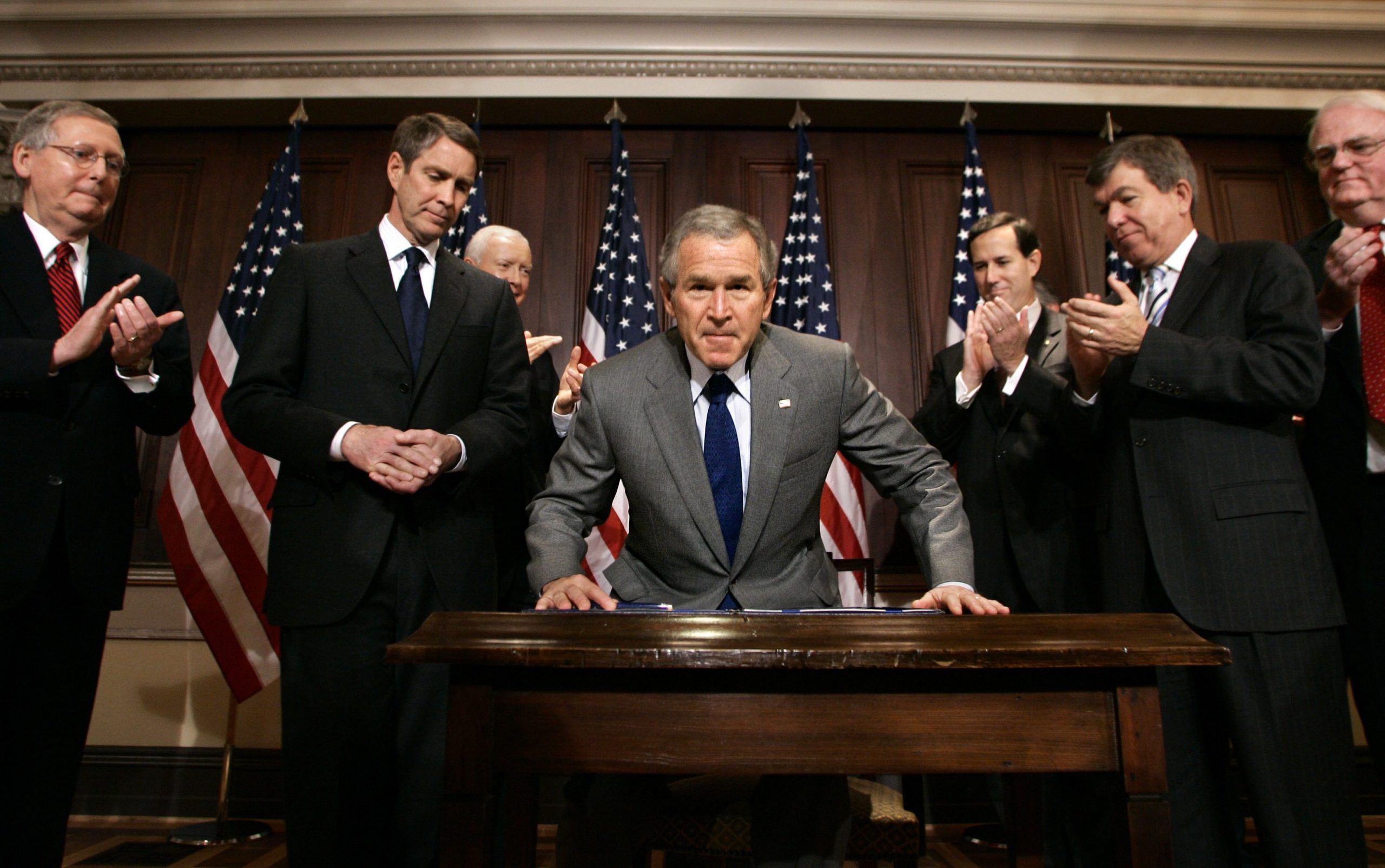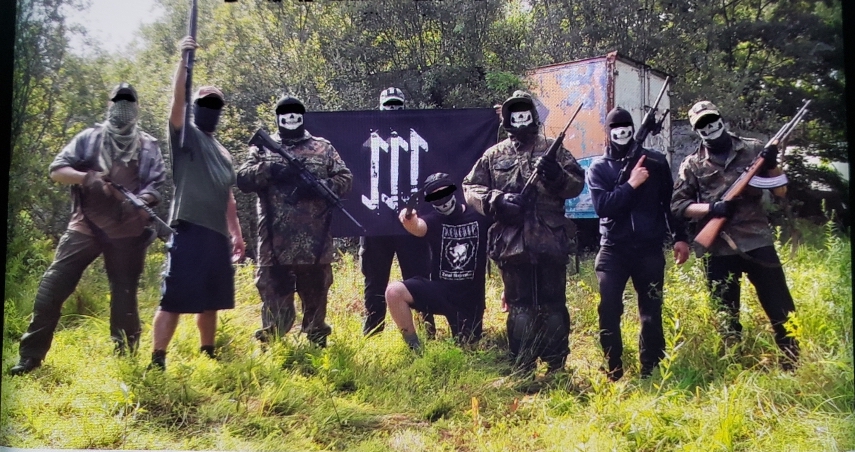Last November, the U.S. Supreme Court declined to review a lawsuit brought by the families of Sandy Hook victims against Remington Arms, the manufacturer of the rifle used in the school shooting. The move allows the case to proceed to trial. A week later, the Indiana Supreme Court followed the high court’s cue, permitting a suit filed by the city of Gary against the 10 largest handgun manufacturers in America to move forward.
The decisions sent shockwaves through the gun world. Over the past 15 years, lawsuits against the gun industry have consistently crumbled, seldom making it to trial. The reason? A highly significant piece of legislation called the Protection of Lawful Commerce in Arms Act, or PLCAA.
The law, passed in 2005, gave the gun industry what legal scholars refer to as immunity. It provided blanket protection from lawsuits alleging harm caused by the very weapons the industry produces. You could still sue manufacturers, distributors, and dealers, but a judge would almost always dismiss the case before it reached trial.
The Sandy Hook and Gary decisions, however, suggest there is a crack in PLCAA’s seemingly solid veneer. What’s different about these cases? And what might they mean for the industry’s legal immunity?
First, the basics:
What is PLCAA?
In the late 1990s, more than 40 cities filed suit against the gun industry, naming dozens of gun manufacturers, distributors, and dealers as defendants. American cities had seen incredible violence in the previous decades, much of it involving handguns and connected to drug crime. City governments wanted redress, and legal victories in suits against the tobacco industry signalled that an avenue to reform might pass through the courts.
So they sued. The cases were aggressive, arguing that the entire industry should acknowledge responsibility for thousands of deaths each year. Fearing widespread reform, the National Rifle Association and the National Shooting Sports Foundation — the industry’s chief lobbying forces — launched an aggressive campaign to convince gun-friendly legislators to do something. Senator Larry Craig of Idaho and Representative Cliff Stearns of Florida, both Republicans, responded by proposing a piece of legislation that would end all pending litigation and prevent any future attempts. The NRA called it “the most significant piece of pro-gun legislation in 20 years.” It moved from introduction to President George W. Bush’s desk in eight months.
In October 2005, Bush signed PLCAA into law. It blocked any lawsuit seeking damages from the industry for the unlawful use of a gun.
The argument, said Jake Charles, executive director of Duke’s Center for Firearms Law, was “that these cases were going after manufacturers for things that were not the manufacturers’ faults, that were instead the fault of the person who pulled the trigger.”
Does that mean the essence of the law is to prevent lawsuits?
Yes.
It’s not unusual for Congress to pass laws to restrict litigation it considers unfair. For example, in the same year PLCAA passed, Congress passed an amendment to the Foreign Intelligence Surveillance Act of 1978 (FISA), which granted legal immunity to telecommunications companies that cooperated with the government’s warrantless wiretapping operations. We won’t bore you with the history of the tort reform movement, but suffice to say that it is a fairly common belief in some legal circles that Congress should limit the scope of personal injury litigation deemed frivolous or harmful to the economy.
What is uncommon about PLCAA, however, is that it provides blanket immunity to an industry, as opposed to some specific industry conduct. Never before had Congress granted a single industry such extensive legal protection — nor has it done so since. The tobacco, automotive, and pharmaceutical industries, for example, have all faced lawsuits alleging that their products caused irreparable harm to the general public. In each instance, legal battles have triggered significant industry-wide changes.
“I don’t think in the legal world the PLCAA is looked on as just regular legislation,” said Charles. Proponents of PLCAA weren’t taking a stance on legal theory or saying that product liability laws needed an overhaul. Rather, they were building a legal shelter to exempt an industry from laws they otherwise acknowledged function appropriately. “It does seem designed to protect the gun industry in particular,” he added.
So the gun industry convinced Congress to save it?
That’s not the whole picture. The sponsors of the bill believed — not unreasonably, in the minds of many legal scholars — that an industry connected to a fundamental constitutional right deserves special protection.
“For example, Exxon is not allowed to endorse an electoral candidate, but The New York Times is because of the special constitutional role that the press plays,” said Adam Winkler, a constitutional lawyer and author of Gunfight: The Battle Over the Right to Bear Arms in America. The gun industry, similarly, is crucial to exercising Second Amendment rights.
What happened to those lawsuits against the industry that you mentioned before?
By the time Bush signed PLCAA into law, courts had already dismissed about half of the lawsuits against the industry brought by cities, citing state-level immunity laws (of which there are many). PLCAA provided legal justification to dismiss the remaining cases. By 2006, cases in at least 10 states had failed to clear PLCAA-imposed legal hurdles.
Only the Gary case survived.
Why?
PLCAA has a specific, if narrow, exception. Unlawful conduct by the industry itself is not protected, meaning if a gun manufacturer, distributor, or dealer breaks the law, it can be sued.
The text of the law says that legal immunity will not apply to any action in which a manufacturer or seller knowingly break laws that regulate the marketing or sale of their products.
Is this how the Sandy Hook and Gary lawsuits come into play?
Yes. In the Sandy Hook case, the plaintiffs allege that Remington violated Connecticut’s unfair trade practices law — that it “knowingly marketed and promoted the Bushmaster XM15-E2S rifle for use in assaults against human beings,” and thus encouraged the boy who would eventually open fire at the elementary school, per court documents in the case.
In Indiana, the plaintiffs allege that the gun manufacturers violated the state’s public nuisance law. This means that the city of Gary is alleging that the handgun manufacturers named as defendants irresponsibly marketed and sold their guns — in this case, in a way that supplied a criminal gun market and fueled soaring rates of gun crime in the city.
What’s next?
Both cases, barring some unforeseen obstacle, will proceed to discovery — a rarity in the history of litigation against the gun industry. The process is likely to take three to six months, as industry defendants respond to wide-ranging requests for documents, many of which must be reviewed and potentially redacted before release.
The cases have already spawned similar suits: In January, the city of Kansas City, Missouri, sued Jimenez Arms and three local gun dealers, alleging a conspiracy to traffic guns that led to soaring rates of gun violence. But even if the Kansas City suit makes it to trial, the litigants will have cleared only the first hurdle. Now a new question looms: Can they win?


